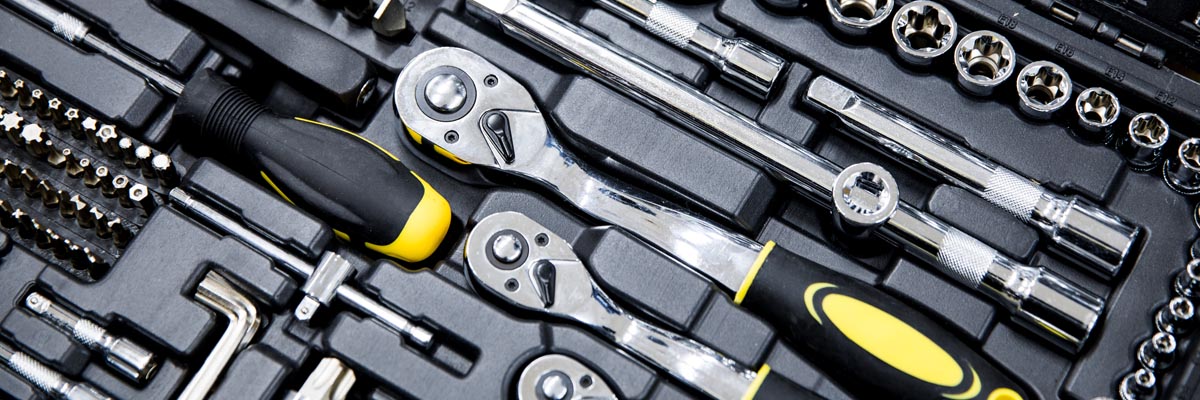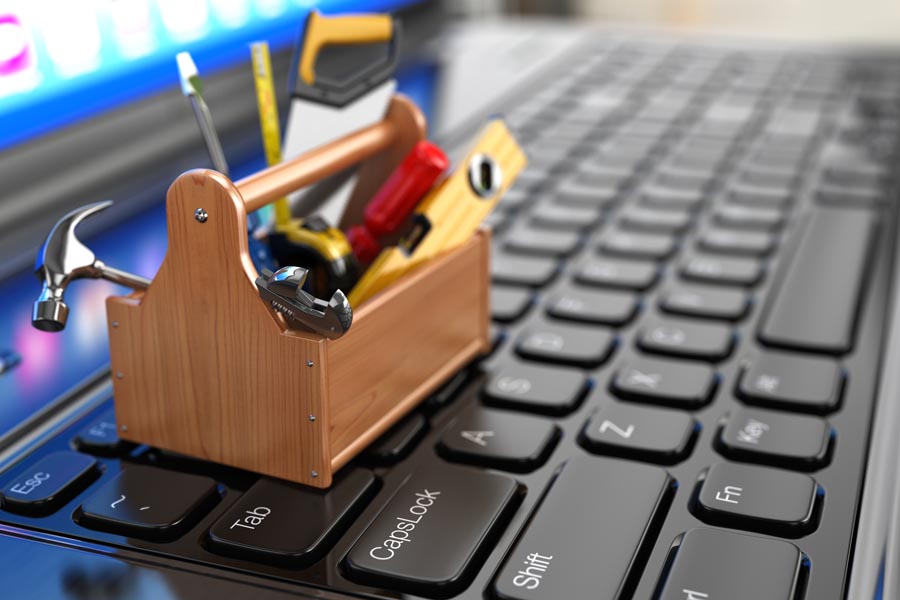Developing a Preventive Maintenance Program for Cleaning Equipment
Preventive Maintenance (PM) is a systematic approach to maintaining cleaning equipment to prevent costly repairs and unexpected breakdowns. PM aims to extend the equipment life, minimize equipment downtime, and reduce costs by conducting routine maintenance tasks and regular inspections. This article will provide a comprehensive overview of PM, its benefits, and best practices for implementing an effective program for cleaning equipment.

Benefits of a Preventive Maintenance Program
Implementing a PM program for cleaning equipment offers numerous benefits for organizations. By proactively addressing maintenance needs, organizations can experience significant improvements in their operations and overall efficiency. Here are some key benefits of implementing a program:
- Decrease Downtime: One of the primary advantages of a well-designed PM program is the decrease in downtime. Routine inspections and tasks can identify and address potential failures or breakdowns before they cause major disruptions.
- Increase Life Expectancy: Regular preventive maintenance helps extend cleaning equipment's life expectancy. The equipment can be kept in optimal working condition through regular inspections, lubrication, and calibration. This reduces the wear and tear and increases the overall lifespan of the assets.
- Eliminate the Need for Overtime Pay: With a program in place, businesses can reduce the need for overtime pay to address failures or breakdowns. Proactively maintaining the equipment can identify and address issues during regular working hours. This helps to avoid emergencies and the associated overtime costs.
- Reduce Safety Risks: Regular inspections and maintenance tasks improve the equipment's functionality and help identify and address any safety concerns. By promptly addressing issues, businesses can minimize the risk of accidents or injuries caused by faulty equipment.
- Improve Cleaning: Properly maintained cleaning machines are essential for delivering high-quality cleaning services. Preventive maintenance ensures the machines operate at their best, providing efficient and effective cleaning results.
Elements of a Preventive Maintenance Program
Designating clear goals, planning and scheduling maintenance, and training staff are crucial steps in establishing an effective Preventive Maintenance (PM) program. Here are the critical elements of a PM program:
- Designate Clear Goals: The first step in establishing a PM program is to define clear goals. Determine what you want to achieve through the program, such as reducing downtime, increasing life expectancy, and improving workplace safety. These goals will serve as the foundation for the entire PM program.
- Plan and Schedule Tasks: The next step is to plan and schedule maintenance activities once the goals are established. This includes determining the frequency of inspections and routine maintenance tasks based on the equipment's usage and manufacturer's recommendations. Create a maintenance schedule that outlines when and how each task will be performed.
- Train Staff: To ensure the success of the PM program, it is essential to provide comprehensive training to the maintenance team responsible for carrying out the tasks. Train them on the proper techniques for inspecting, lubricating, and calibrating the cleaning equipment.
By following these instructions and implementing a PM program, businesses can reduce the risk of unexpected breakdowns, increase equipment life expectancy, and enhance workplace safety. With a well-designed PM program in place, businesses can experience improved efficiency and cost savings by avoiding reactive maintenance and costly repairs.
Developing a Preventive Maintenance Plan
Setting up a scheduling system for maintenance tasks is crucial for organizations to ensure the proper upkeep of their cleaning equipment. Here are vital factors to consider when setting up a scheduling system for maintenance tasks:
- Manufacturer Recommendations: Consider the manufacturer's recommended intervals and procedures. Manufacturers often provide guidelines on when specific maintenance tasks should be performed to maintain the optimal condition of their products.
- Equipment Dependencies: Identify any dependencies or interactions between different pieces of equipment. For example, if one piece of equipment relies on another for its operation, it is important to schedule tasks for both pieces accordingly. This ensures that all interconnected equipment is functioning optimally.
- Previous Breakdowns: Analyze the history of equipment failures or issues. If certain machines experience specific failures, scheduling more frequent maintenance tasks or addressing these issues proactively may be necessary.
Plan and Track your Preventive Maintenance Program
There are numerous third-party software systems available to help you plan and track a preventive maintenance program. These systems can automate scheduling, track maintenance tasks, and generate performance reports, making it easier to manage equipment upkeep. However, using a preventive maintenance provider, such as Hillyard, offers even more significant benefits. Hillyard can take over the planning and tracking of all maintenance activities, ensuring that your equipment is serviced correctly and on time. This delegation allows you to focus on other critical managerial tasks, improving your overall efficiency and productivity. By entrusting maintenance to experts, you also benefit from their specialized knowledge and experience, which can lead to better equipment performance and longevity.

Create Reports on Performance and Equipment Life Cycle
A program must create performance and asset life cycle reports. These reports provide valuable insights into the program's efficiency and help identify improvement areas. Organizations can detect issues early by tracking equipment performance, reducing costs, and prolonging machine lifespan. Benefits of robust reporting include:
- Early Issue Detection: Regularly tracking equipment performance allows businesses to identify any signs of deterioration or potential issues before they escalate into equipment failures.
- Reduced Costs: Businesses can proactively plan and schedule tasks when needs are identified early. This helps prevent minor issues from developing into more significant problems that require extensive repairs or machine replacement.
Hillyard's Step-by-Step Guide to Develop your PM Program
Now that we've discussed the benefits and essential elements, we can outline Hillyard's step-by-step method to manage your PM program.
We Assess Your Needs:
- Evaluate the cleaning machines and identify critical assets requiring regular service.
- Determine the optimal task frequency for each machine based on production cycles, manufacturer recommendations, and facility requirements.
- Prioritize equipment based on its criticality and prioritize the implementation schedule accordingly.
We Establish Your Maintenance Tasks:
- Define a comprehensive list of tasks and methods that need to be performed by technicians on each piece of equipment.
- This may include routine inspections, cleaning, lubrication, calibration, filter replacements, and other activities.
- Consult the equipment manufacturer's manual and industry best practices to determine the required tasks.
We Develop a Schedule that Works for Your Organization:
- Create a schedule that outlines the frequency and timing of each task.
- Consider factors such as equipment usage, production cycles, and any specific requirements the manufacturer gives.
- Ensure the schedule allows adequate time for personnel to perform tasks without interfering with regular operations.
We Track Your Maintenance:
- We use our software system to streamline program management, track inventory, and conduct analysis.
We Monitor, Evaluate, and Report:
- Monitor the program's performance on a regular schedule to ensure its effectiveness and find opportunities for continuous improvement.
- Track maintenance completion rates, equipment downtime, and any unexpected breakdowns that occur.
- Use this data to identify any areas where improvements can be made and make necessary adjustments to the program.
Hillyard can do the work for you (Hillyard Programmed Maintenance)
Hillyard Programmed Maintenance can track and maintain your equipment, keeping your machines running at peak performance without the hassle of setting up your own program.
Hillyard Programmed Maintenance includes:
- Regularly scheduled calls by professional, factory-trained technicians. Intervals can be set at monthly, quarterly, semi-annual, or annual.
- Detailed inspections and comprehensive service with complete write-ups on service performed.
- Training for operators on simple daily or weekly procedures that keep machines operating efficiently.
- Computerized service history tracking provides accurate documentation to support factory warranty claims and repair costs.
- Priority service level on that rare occasion when emergency corrective maintenance is required.
Your Next Steps
Whether you decide to build your PM program internally or outsource your program to Hillyard, we want to help. Use the "I'm Interested" form at the bottom of this page, and we will contact you to get started.
Frequently Asked Questions
How do I perform preventive maintenance on a floor scrubber?
Refer to your equipment manual for specific instructions. Instructions will generally include performing a visual inspection, tightening loose hardware, inspecting the batteries, regular cleaning of the tanks and filters, lubricating parts, and inspecting hoses for cracks and signs of wear.
How do I perform preventive maintenance on a vacuum cleaner?
Refer to your equipment manual for specific instructions. Instructions will generally include inspecting hoses for signs of wear, replacing filters, cleaning or replacing the brush roll, and inspecting the electrical cord for broken insulation or a missing ground plug.
How do I perform preventive maintenance on a carpet extractor?
Refer to your equipment manual for specific instructions. Instructions will generally include flushing the solution and recovery tanks, inspecting and either replacing or cleaning the spray tips, cleaning or replacing the brush roll, inspecting hoses for cracks, and inspecting cords and wiring for damage.